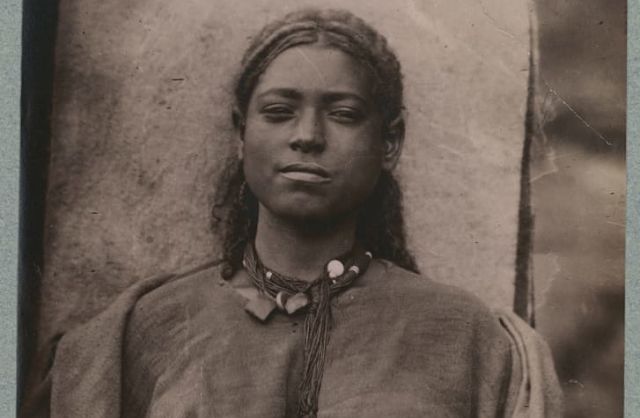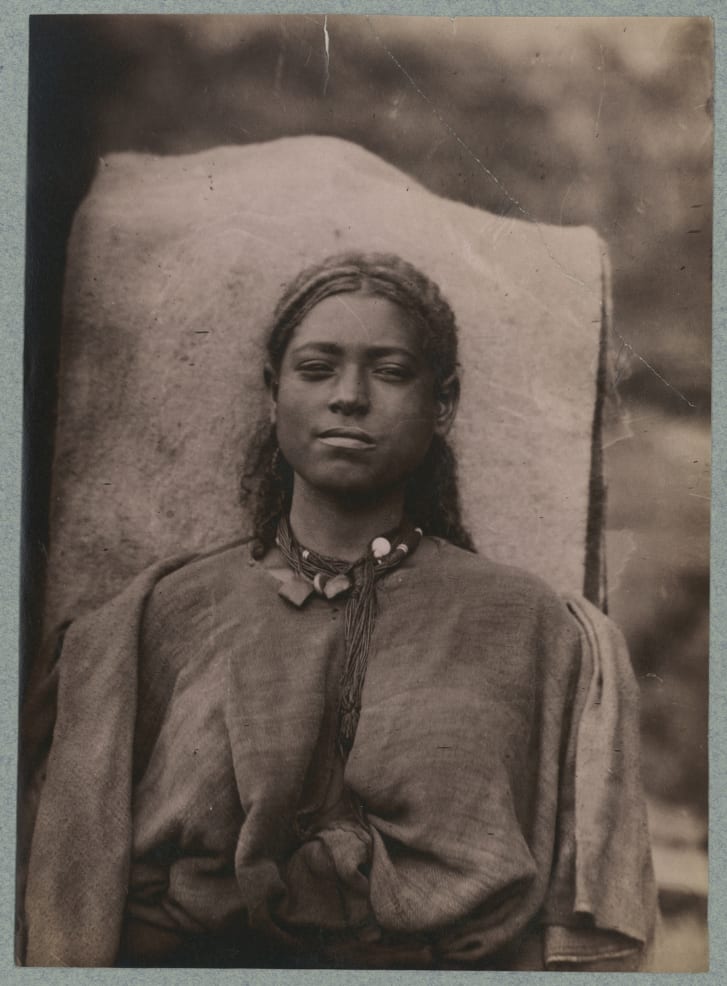 In the 1800s, French explorer Jules Borelli published a photo diary capturing his journey to Ethiopia including this portrait of a young woman (1885-1888) among images of people from the Amhara, Oromo and Sidama ethnic groups. (Photo by Jules Borelli. Credit: Musée du quai Branly - Jacques Chirac / RMN Grand Palais)
In the 1800s, French explorer Jules Borelli published a photo diary capturing his journey to Ethiopia including this portrait of a young woman (1885-1888) among images of people from the Amhara, Oromo and Sidama ethnic groups. (Photo by Jules Borelli. Credit: Musée du quai Branly - Jacques Chirac / RMN Grand Palais)
CNN
The stories behind 10 of the world’s earliest known photographs
As early cameras began spreading out from Europe in the middle of the 19th century, photography became an increasingly powerful medium for obtaining and disseminating information about the wider world.
People and places that had previously only been captured through art or in written accounts could suddenly be depicted with unprecedented accuracy. With this new medium, local administrators and commercial photography studios, in cities from Hong Kong to Calcutta, helped build a richer visual history of life in the 1800s.
A recent exhibition at the Louvre Abu Dhabi brought together 250 of the earliest known photographs from the Middle East, Asia, Africa and the Americas, the oldest of which dates back to 1842. CNN asked the show’s curator, Christine Barthe, to pick 10 images from the museum’s collection and explain what they reveal about the places — and times — they were taken in.
Portrait of a young woman, Ethiopia (1885-1888)

A photographic portrait by French explorer Jules Borelli. Credit: Musée du quai Branly – Jacques Chirac / RMN Grand Palais
French explorer Jules Borelli produced detailed illustrated diaries of his travels in Ethiopia, where he often photographed people from the Amhara, Oromo and Sidama ethnic groups.
This albumen image stood out to Barthe because of the young woman’s “mysterious smile.” Unlike the more formal or ethnographic portraits of the era, the subject appears relaxed, changing the mood of the image.
“We can see some kind of relationship between the the photographer and the person being photographed,” said Barthe. “(Her smile suggests) that there is some kind of complicity with the photographer, or something funny happening, though we don’t know if it’s ironic or something else.”
See the full list at CNN.com »
—
Join the conversation on Twitter and Facebook.

























